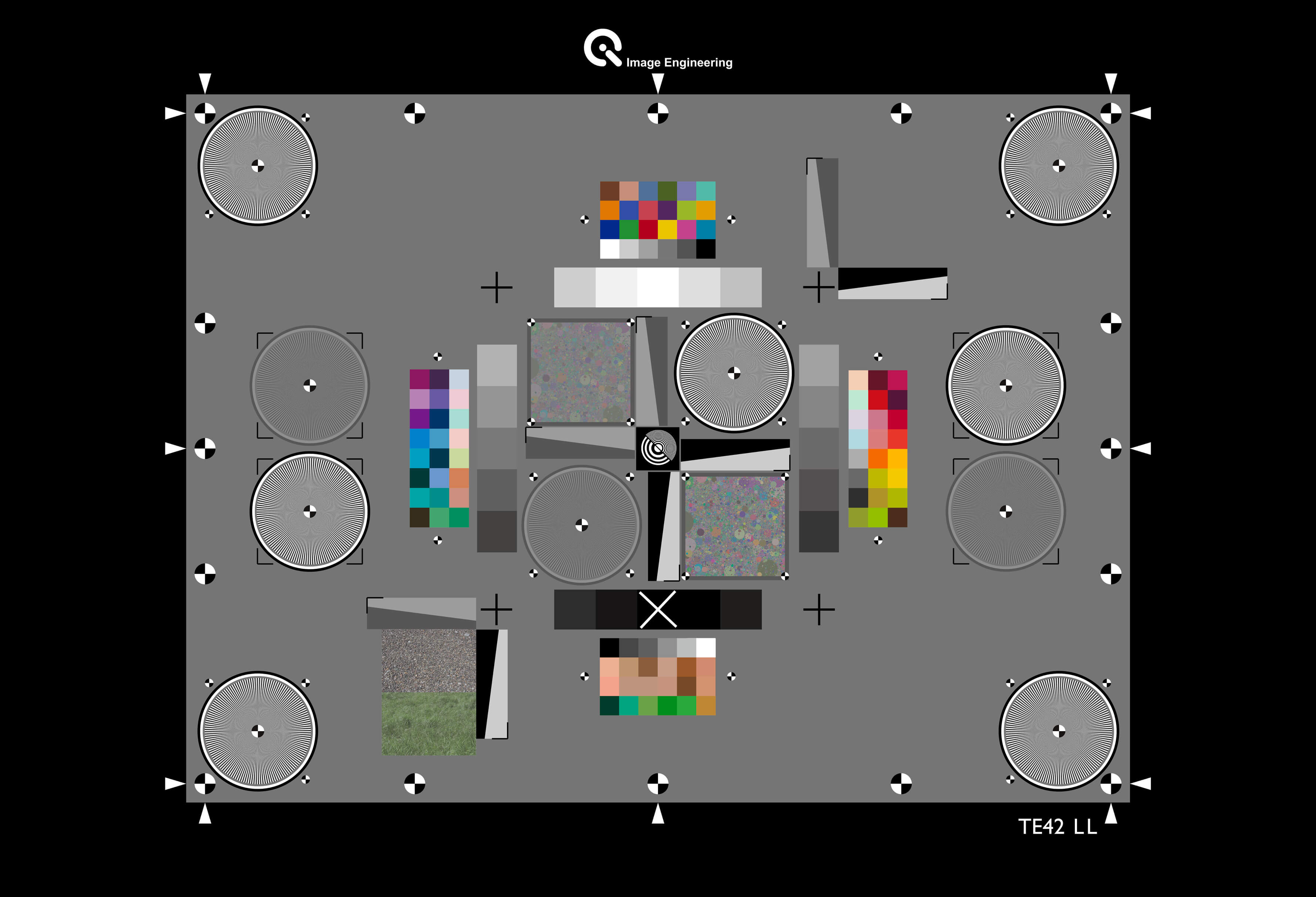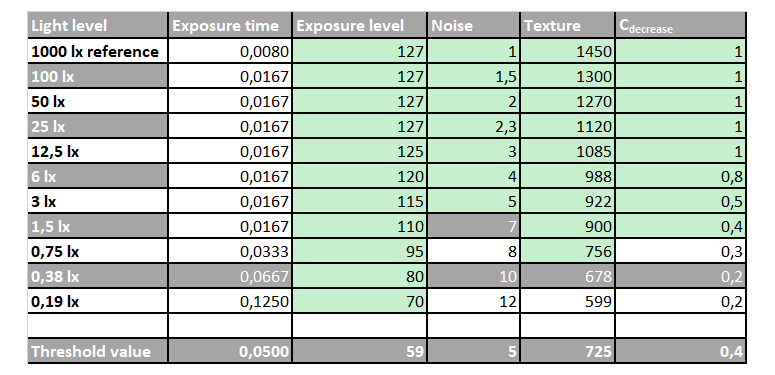Low-Light
Image Quality FactorsIntroduction
Low-light performance is defined as the lowest light level that a camera can capture an image while still retaining acceptable image quality. Cameras with small sensors, such as mobile phones, often encounter problems with low-light performance. Measuring low-light performance has, in the past, generally seen inconsistent or illogical test procedures (e.g., the sensitivity of 0 lux). In 2018, however, ISO standard 19093 was published to outline measurement methods and specifications for testing and analyzing low-light performance.1 Low-light testing has now become a critical aspect of overall camera quality evaluation.
Measuring low-light
Before the standard was published in 2018, there were almost no universal test methods, and the ones that did exist did not provide accurate evaluations. The test method described in the standard uses a multipurpose test chart.
The TC42 working group created the TE42-LL multipurpose chart in collaboration with the Image Engineering chart production team. The chart itself contains all of the vital image quality testing structures for measuring the low light performance.

The first step of a low-light evaluation is to ensure that the chart has proper uniform illumination. As low-light testing naturally requires lower levels of light during the analysis, it is essential to use a light source adjustable for various light levels. Currently, the iQ-Flatlight from Image Engineering is the only commercially available lighting system that can provide a broad light spectrum range at the required intensity levels.
After setting the lighting, ISO 19093 then states that the next step is to capture a reference image using bright light conditions at >1000 lux. From there, the light level should continue to be reduced step by step with an image captured at each light level. The final step is to evaluate the images for all of the necessary image quality aspects such as texture, color, noise, etc.
The lowest light level where all image quality factors are still above the required thresholds (for each of those factors) is reported as the camera's low-light performance under test.

The image quality factors that are determined are:
- Exposure time to make sure that the image does not get blurry due to a human handshake.
- Exposure levels as images are sometimes underexposed to maintain short exposure times and hide high amounts of noise.
- Texture (low contrast fine detail) can be lost due to noise reduction applied to an image at high amplification levels.
- Noise can occur due to high amplification levels.
- Chroma decrease might be visible due to noise reduction in color channels only.
Table 1 below shows an example of the results obtained from a low-light performance measurement. This camera's low light performance is 3 lux, which is the last level where all values are green (above the thresholds).

These thresholds are merely examples as ISO 19093 does not define a single set of thresholds. It only describes the procedure, and users can set their thresholds depending on the camera's application. There are currently a few groups that have defined a set of thresholds for cameras for specific applications. For example, the VCX group for cellphone analysis is working on a set that they wish to establish for evaluating the low-light capabilities of a cell phone.
Conclusion
Low-light performance is the lowest light level that a camera can capture while still retaining acceptable values across the various image quality factors. Until the publication of ISO standard 19093 in 2018, there was no other established guideline for measuring low-light. ISO 19093 introduced a method that relies on a multipurpose test chart for analyzing low-light performance. This test chart includes all of the necessary test targets (color, noise, resolution, etc.) for measuring the most crucial image quality factors.
Apart from the chart, the other most crucial part of analyzing low-light is utilizing a light source that is adjustable to various light levels (the iQ-Flatlight is currently the only light on the market with this ability). Together, this chart and light source provide a proper solution for measuring a camera's low-light performance.

